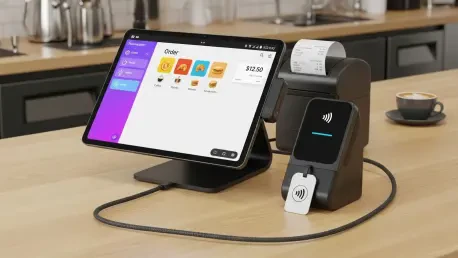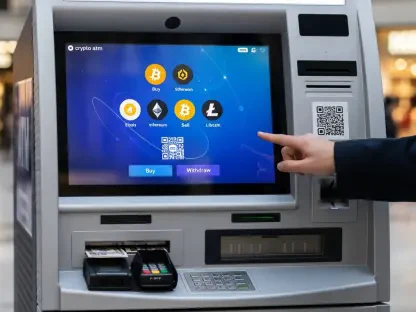Imagine a bustling retail store during the holiday season, where long checkout lines frustrate customers, and associates struggle to access inventory data on outdated, clunky terminals, leading to missed sales opportunities and a decline in customer satisfaction. This scenario, once all too common, highlights the critical need for transformation in retail operations. Modern Point of Sale (POS) technology has emerged as a game-changer, replacing cumbersome legacy systems with agile, integrated solutions that empower businesses to thrive in a competitive, omnichannel landscape. This review delves into the evolution, features, real-world impact, and future potential of these advanced systems, offering a comprehensive look at how they redefine efficiency and customer engagement in the retail sector.
Introduction to Modern POS Technology
At its core, modern POS technology transcends the traditional role of a transactional device, evolving into a strategic tool that drives operational excellence. Unlike the isolated, bulky systems of the past, today’s solutions are mobile, interconnected, and designed to enhance every facet of retail management. They enable seamless interactions between staff and customers while providing real-time data access, fundamentally changing how transactions are processed and relationships are built.
The shift toward these advanced systems reflects a broader trend in retail, where adaptability and customer-centricity are paramount. Modern POS platforms support omnichannel experiences, ensuring consistency whether a customer shops online, in-store, or through a hybrid model. This capability not only boosts satisfaction but also builds resilience against market disruptions, positioning retailers to stay competitive in an ever-changing environment.
Core Features of Modern POS Systems
Mobility and Anywhere Selling
One of the standout features of contemporary POS systems is their mobility, allowing associates to engage customers anywhere within or beyond the store. Equipped with handheld devices, staff can access real-time inventory, pricing, and customer purchase history, facilitating on-the-spot transactions. This flexibility leads to higher conversion rates as personalized, AI-driven recommendations encourage upsells and increase basket sizes.
Beyond the store walls, mobile POS technology supports off-site events and pop-up shops with ease. Retailers can set up temporary locations without the burden of heavy hardware, capitalizing on new revenue streams. This portability ensures that sales opportunities are never missed, regardless of location, while also enhancing the overall customer experience through faster, more attentive service.
Integration and Omnichannel Capabilities
Another defining characteristic of modern POS systems is their ability to integrate seamlessly with omnichannel platforms, creating a unified shopping experience. Whether a customer initiates a purchase online and completes it in-store or opts for endless aisle options, these systems ensure continuity. Frictionless returns and consistent data across channels build trust and satisfaction among shoppers.
This integration also streamlines backend operations, syncing inventory and sales data in real time. Retailers can manage stock levels more effectively, avoiding overstock or shortages that impact profitability. By bridging the gap between digital and physical touchpoints, modern POS solutions empower businesses to meet evolving consumer expectations with precision and agility.
Current Trends Shaping POS Technology
The trajectory of POS technology is heavily influenced by a shift in perception, viewing these systems as strategic enablers rather than mere utilities for processing payments. Retailers now prioritize mobile-first designs to align with customer expectations for quick, on-the-go interactions. This trend underscores the demand for lightweight, intuitive interfaces that mirror familiar smartphone experiences.
Additionally, the adoption of serverless architectures is gaining traction, reducing the need for costly in-store IT infrastructure. Such innovations lower maintenance expenses while ensuring scalability, allowing retailers to adapt swiftly to market changes. The push for rapid adaptability also drives frequent software updates, keeping systems current without disrupting daily operations.
A growing emphasis on data-driven personalization shapes the development of POS platforms as well. Retailers leverage integrated analytics to tailor promotions and services, meeting individual customer needs more effectively. This focus on customization reflects a broader industry movement toward using technology to deepen engagement and loyalty.
Real-World Applications in Retail
Across the retail sector, modern POS technology transforms in-store operations by enabling faster, more personalized checkouts. Associates equipped with mobile devices can assist customers directly on the sales floor, reducing wait times and enhancing satisfaction. This efficiency proves invaluable during high-traffic periods, ensuring smooth transactions even under pressure.
The technology also shines in non-traditional settings like pop-up events or off-site selling. Retailers can deploy portable systems to capture sales at festivals or temporary locations, expanding their reach without significant investment in fixed infrastructure. Such versatility allows brands to test new markets and build visibility with minimal risk.
Seasonal peaks highlight another practical benefit, as modern POS systems support flexible staffing. With intuitive interfaces, temporary or part-time staff can be trained quickly, maintaining service quality during busy periods. These real-world applications demonstrate the tangible value of adopting advanced POS solutions, directly impacting revenue and operational flow.
Challenges and Limitations of Modern POS Systems
Despite their advantages, modern POS systems face notable challenges, particularly in system integration. Connecting new platforms with existing software or hardware often involves complex configurations, risking downtime or data inconsistencies. Retailers must allocate resources to ensure smooth transitions, a process that can strain budgets and timelines.
Data security presents another hurdle, as these systems handle sensitive customer information across multiple channels. Compliance with stringent regulations demands robust safeguards, adding layers of complexity to implementation. Breaches or non-compliance can erode trust, making cybersecurity a top priority for developers and businesses alike.
Cost barriers also impede adoption, especially for smaller retailers transitioning from legacy setups. The initial investment in hardware, software, and training can be daunting, though flexible pricing models and scalable solutions are emerging to address this. Ongoing efforts to mitigate these limitations focus on creating accessible, secure, and streamlined options for diverse retail environments.
Future Outlook for POS Technology
Looking ahead, the potential for POS technology appears boundless, with deeper integration of artificial intelligence on the horizon. Predictive analytics could enable retailers to anticipate customer needs, optimizing inventory and promotions with unprecedented accuracy. Such advancements promise to elevate personalization to new heights, strengthening loyalty over time.
Contactless payments are also poised for further refinement, offering even faster and more secure transaction methods. As consumer preference for touchless interactions grows, POS systems will likely incorporate biometric authentication or enhanced mobile wallet features. These developments aim to reduce friction while maintaining robust protection against fraud.
The long-term impact on retail includes fortifying operations against shifting behaviors and market dynamics. By embracing innovations, businesses can future-proof their strategies, ensuring relevance amid evolving trends. From enhancing customer retention to enabling dynamic scaling, the trajectory of POS technology suggests a pivotal role in shaping the industry’s future.
Conclusion and Final Assessment
Reflecting on this evaluation, it becomes evident that modern POS technology has redefined retail by delivering interconnected benefits across revenue, efficiency, and agility. The detailed analysis of its features and applications underscores a transformative shift from transactional tools to strategic assets. Each advancement, from mobility to omnichannel integration, has proven instrumental in addressing past inefficiencies.
Moving forward, retailers should prioritize assessing their current systems to identify gaps that modern POS solutions could fill. Exploring scalable options and partnering with providers offering robust support are critical steps taken by successful adopters. Additionally, staying informed about emerging trends like AI and contactless innovations ensures preparedness for the next wave of change, securing a competitive edge in a dynamic market.









